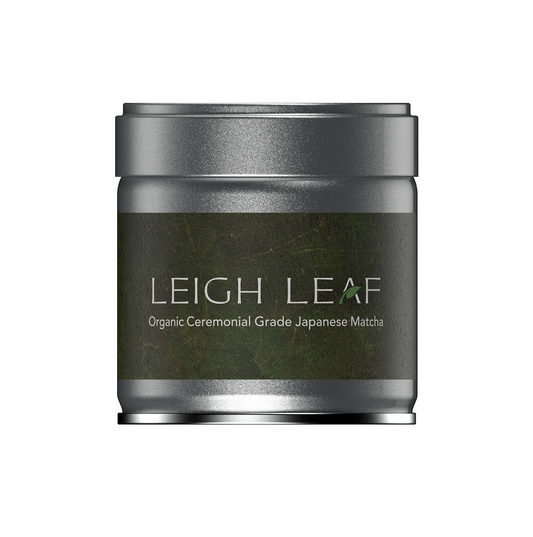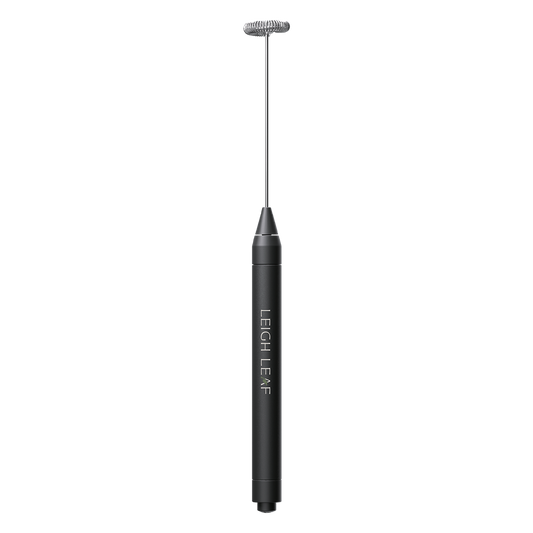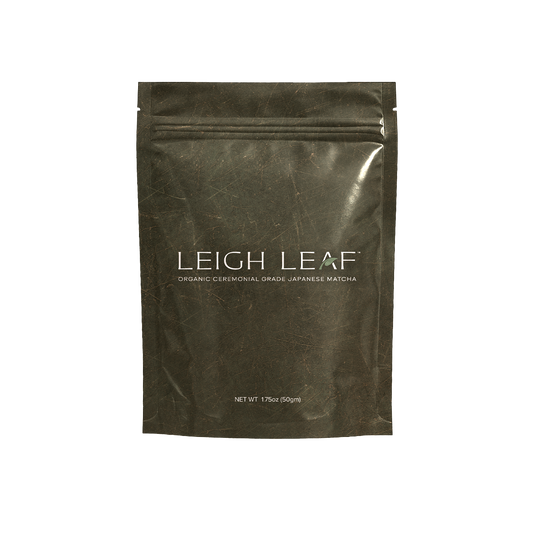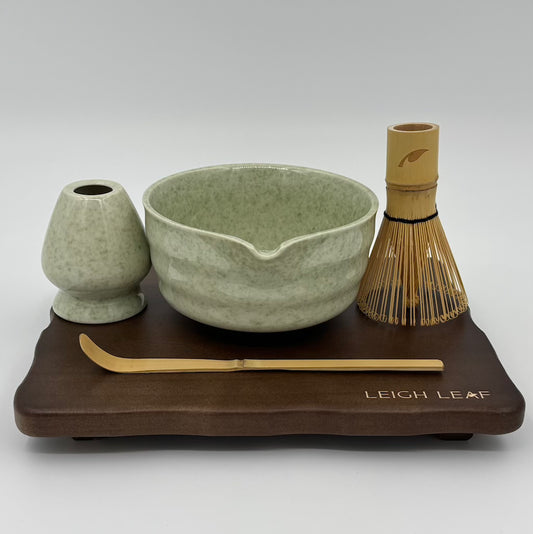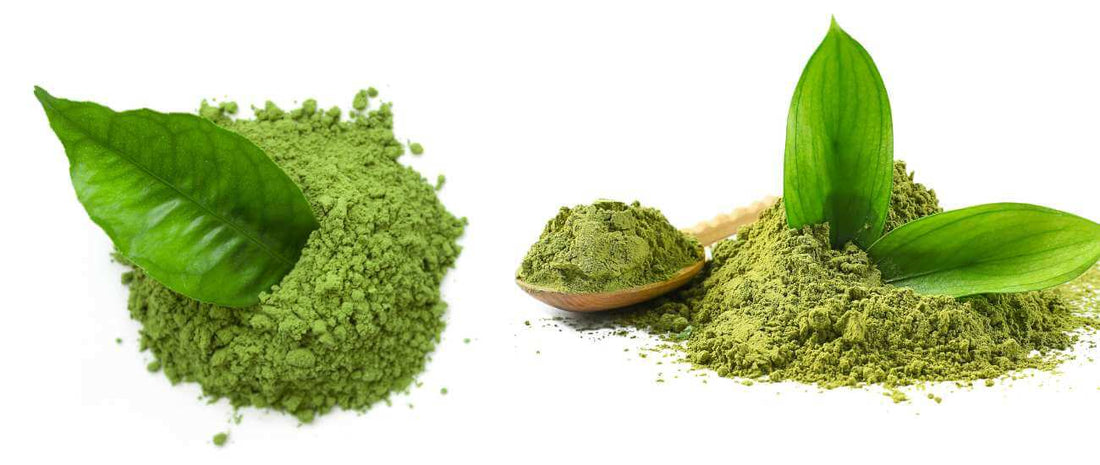
Ceremonial Grade Matcha vs. Culinary Grade Matcha: What's the Difference?
Share
If you're a matcha enthusiast, you've likely stumbled upon the intriguing world of ceremonial grade matcha and culinary grade matcha. These terms might sound fancy, but they play a crucial role in the quality and application of this vibrant green matcha tea powder. Let's embark on a journey to uncover the distinctions between these two matcha grades, exploring their flavors, preparation methods, and best uses.
Table of content
What Is Matcha?
It is important to understand what matcha is before discussing ceremonial versus culinary matcha. The Japanese have traditionally grown and processed matcha, which is a powdered green tea. It has gained global popularity not only for its distinctive flavor but also for the unique way it's prepared and consumed.
What Is Ceremonial Grade Matcha?
Now, let's focus on the cream of the crop - organic matcha ceremonial grade. This top-tier matcha is the result of meticulous cultivation and processing. The shade-grown leaves are harvested by hand and stone-ground into a fine, vibrant green powder. This grade is characterized by its vivid color, sweet aroma, and a nuanced, complex flavor profile.
How to Prepare Ceremonial Grade Matcha
Matcha preparation is a complex art. Begin by sifting a small amount of matcha into a bowl to ensure a smooth, lump-free consistency. A frothy layer will form on top when you whisk vigorously in a "W" or "M" shape until hot water (not boiling) is added. The result is a velvety, emerald-green beverage that embodies the essence of the tea leaves.
What Is Culinary Grade Matcha?
On the flip side, we have culinary-grade matcha, a more versatile and budget-friendly option. While it undergoes similar cultivation processes, culinary matcha is often made from leaves that are slightly older, resulting in a more robust flavor. In addition to being perfect for culinary creations, this grade is also a favorite among home cooks.
How to Use Culinary Grade Matcha
Unlike the meticulous preparation of ceremonial grade matcha, culinary matcha is a chameleon in the kitchen.
Adding a subtle earthy flavor and vibrant green hue to recipes will make them stand out. Whether it's smoothies, desserts, or savory dishes, the possibilities are endless. Just keep in mind that its flavor may be more pronounced and less refined compared to its ceremonial counterpart.
What’s the Difference Between Green Tea and Matcha?
The difference between matcha and traditional green tea is a common question. While both originate from the Camellia sinensis plant, the key distinction lies in the cultivation and preparation methods. Matcha is made from shade-grown tea leaves ground into powder, offering a concentrated flavor and a higher concentration of nutrients compared to steeped green tea.
Benefits of Matcha
Before we explore the differences between ceremonial and culinary matcha, let's appreciate the health benefits they share. Matcha's antioxidant properties, particularly catechins, have been linked to a range of health benefits. Matcha's organic tea presence of L-theanine provides a steady energy boost, promoting alertness without the jitters associated with other caffeinated drinks.
Differences in Texture and Taste
The nuances between ceremonial and culinary-grade matcha become apparent when you compare their texture and taste. Ceremonial-grade matcha boasts a smoother, silkier texture and a delicate, almost sweet flavor profile. On the other hand, culinary-grade matcha tends to be coarser, with a bolder, more robust taste that can withstand the cooking process.
When to Use Ceremonial Vs. Culinary-grade Matcha
The decision between ceremonial and culinary matcha depends on your intended use. Reserve ceremonial grade matcha for traditional tea ceremonies, where its refined taste and vibrant color can be truly appreciated. If you're incorporating matcha into recipes, opt for culinary-grade matcha, as its robust flavor can stand up to the other ingredients.
So What’s the Best Matcha Grade to Use?
Matcha's ceremonial or culinary grade ultimately depends on its use and personal preference. If you seek a transcendent tea-drinking experience, invest in ceremonial-grade matcha. For culinary adventures and everyday recipes, culinary-grade matcha is the way to go. Consider having both in your pantry to cater to various occasions.
What Is the Best Place to Buy Matcha Online?
Matcha is best discovered online, and selecting a reputable brand like Leigh Leaf ensures a satisfying experience. Our Ceremonial Grade Matcha adheres to the highest quality standards, offering you premium organic Matcha powder. Experience the excellence of organic Matcha tea with our Matcha powder.
FAQs About Matcha
What Flavors Go with Matcha?
Matcha has a versatile flavor that pairs well with various ingredients. Experiment with combinations like matcha and coconut, matcha and citrus, or even matcha and chocolate. The earthy notes of matcha can complement both sweet and savory dishes.
Does Matcha Have Caffeine?
Yes, matcha contains caffeine, but its unique composition provides a more sustained and mellow energy boost compared to coffee. The presence of L-theanine in matcha creates a calming effect, balancing the stimulating effects of caffeine.
Are Matcha and Green Tea the Same?
Matcha and traditional green tea are both made from the same plant, but they are cultivated, processed, and prepared differently. Matcha involves shade-growing the leaves, stone-grinding them into powder, and consuming the whole leaf, offering a more concentrated flavor and nutritional profile.
In conclusion, understanding the nuances between ceremonial grade matcha and culinary grade matcha allows you to elevate your matcha experience, whether you're savoring a tranquil tea ceremony or experimenting with culinary creations. Embrace the diversity of matcha and let your taste buds embark on a flavorful journey through this vibrant green elixir.
For additional inquiries about matcha, please explore the Leigh Leaf blog section for further information or contact our expert support team through our contact form. We are delighted to help you.

